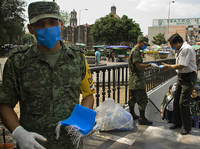As the World Health Organization agonizes over whether or not to declare the H1N1 flu virus an official pandemic, I can't help but think of the American national security establishment's continuing struggle over the definition of threat in a post-9/11 world. In both instances, we see institutions with worldwide responsibilities coming to grips with an increasingly interconnected global landscape. And although that global landscape, according to all the available data, suffers less catastrophe, it nonetheless appears to present far greater potential for such catastrophes to unfold with seemingly uncontrollable consequences.
By "less catastrophe," I mean that in a world of almost 7 billion people, an ever-smaller percentage of humanity experiences true disaster -- both man-made and natural -- on a regular basis. Those who do typically suffer less terrible consequences (most notably, fewer are actually killed). Moreover, we're constantly learning more and more about the underlying conditions that enable the most terrible consequences, thus arguably reducing our sense of uncertainty and, along with it, the realm of the "unthinkable."
And yet, there's no disputing the fact that as humanity becomes more intimately interdependent, the potential for bad things to spread with great speed increases dramatically. More networks, after all, means more feedback loops.

